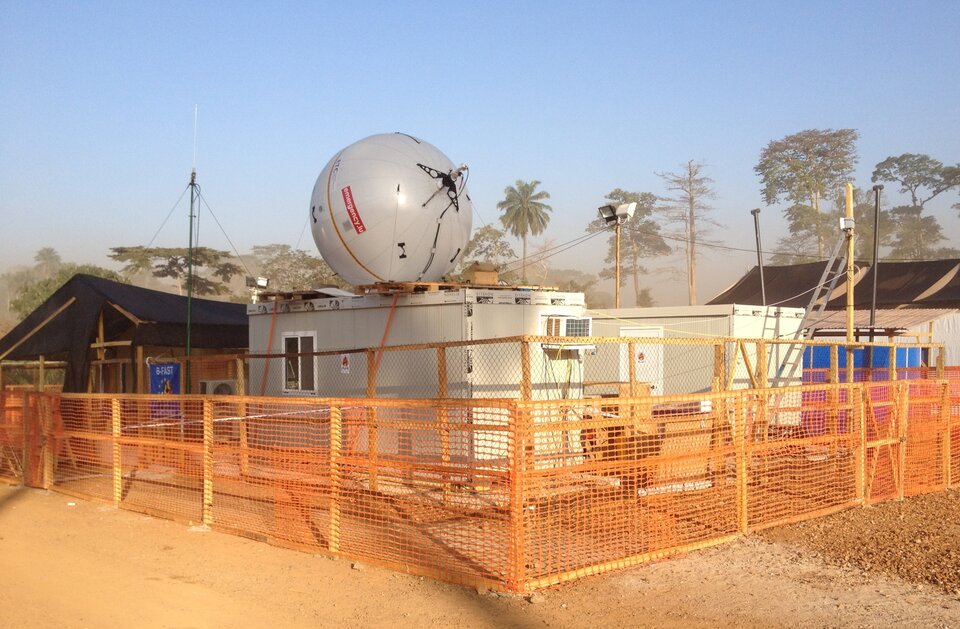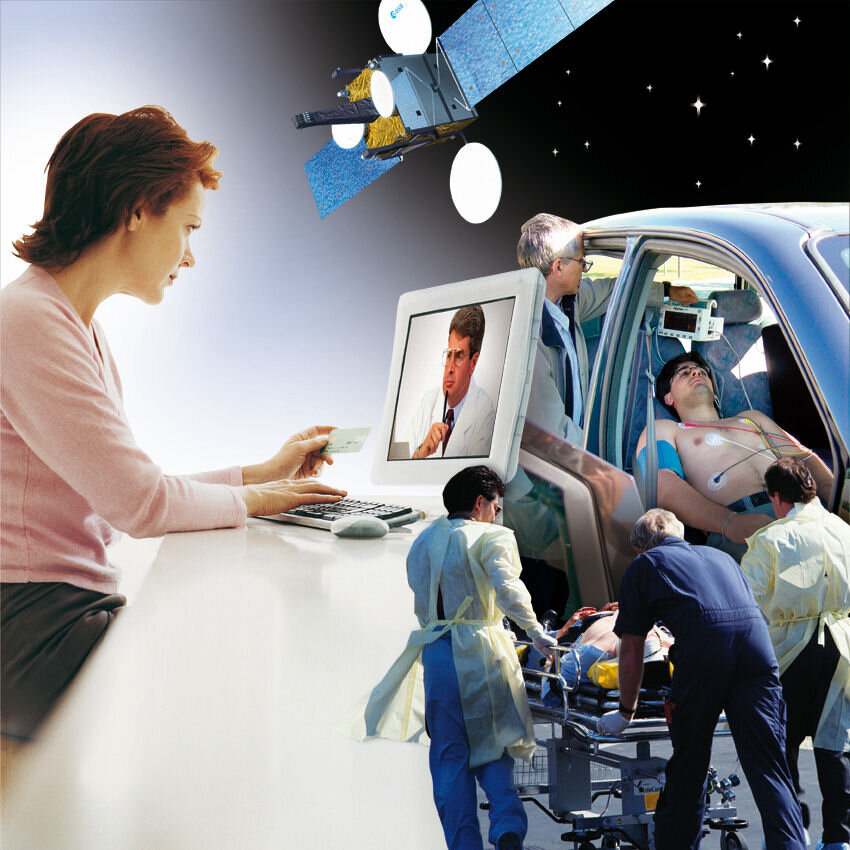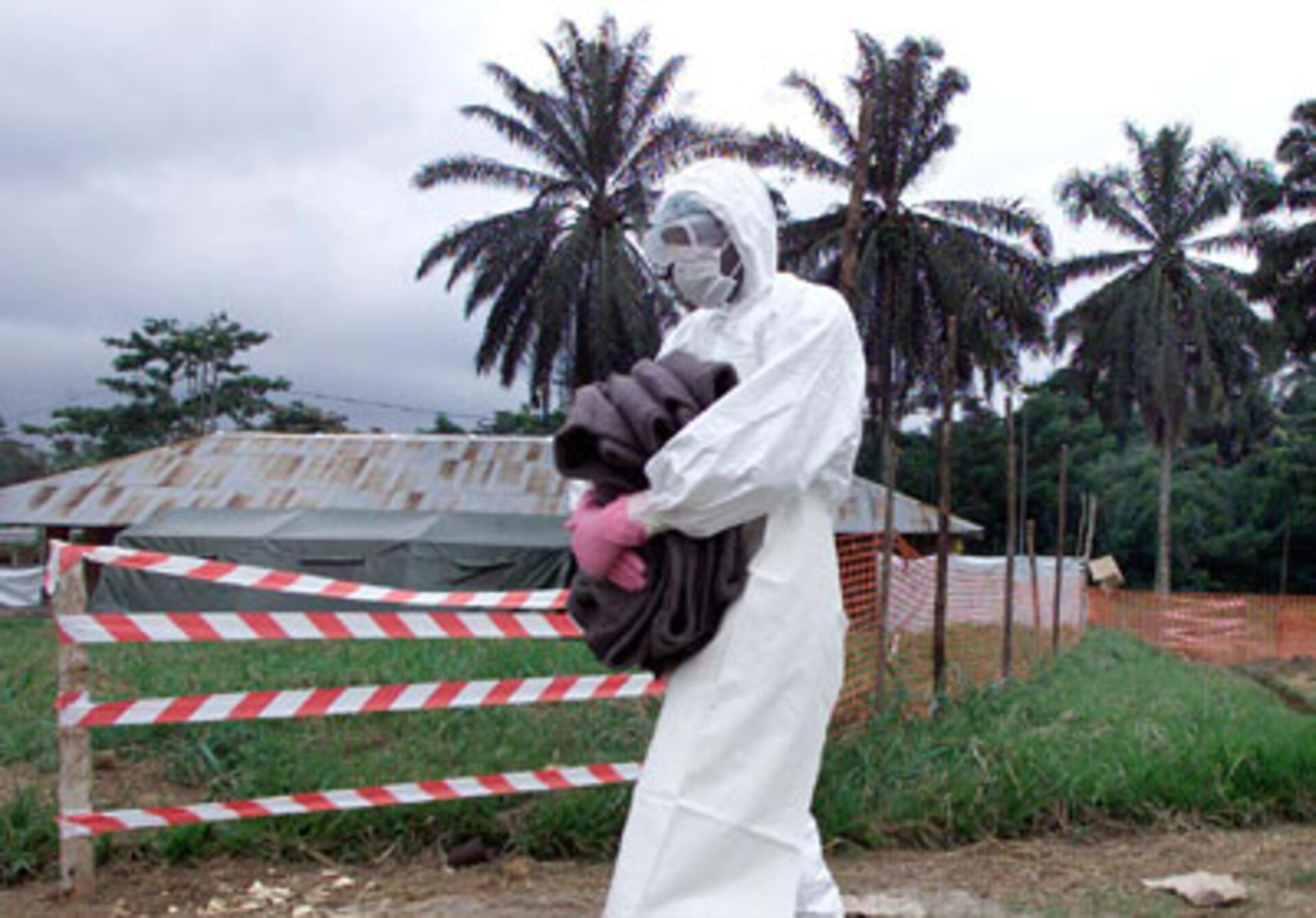When the nearest doctor is not next door
The rampant spread of deadly communicable diseases, such as Ebola or malaria, has been threatening large numbers of people across sub-Saharan Africa, and there is a permanent risk of a serious crisis faced by the health workforces across this region.
Satellite services have proven to be a very useful means to ameliorate these problems. Remote training of local health workers and tele-diagnosis provided by distant expert centres can be a major step towards bringing this situation under control.
New antiviral drugs to treat Ebola patients in West Africa have also been tested with the help of a transportable diagnostics laboratory developed with ESA’s support. B-LiFE, designed to speed up the diagnoses of pathogens in humanitarian and medical emergencies, includes a specialised tent that is easy to set up, specialised equipment to handle and analyse blood samples, and an inflatable satellite antenna.
Satcoms offer real-time communication and allow to call on experts located anywhere else in the world, which is paramount to refine treatments for dynamic diseases, as for instance Ebola. EO data helps to prepare the mission (selection of the site) and to build dynamic epidemiological map. Navigational data also helps to track people and items in the area.

B-LiFE can be used anywhere, even in remote locations. It was used by Belgium’s B-Fast emergency team that set up the laboratory at an Ebola treatment centre in N’Zerekore, Guinea, an area surrounded by forest and with no telecommunications infrastructure. In December 2014, the B-LiFE service was registered in the European Emergency Capacity Response within the European Mechanism for Civil Protection managed by the European Commission. As such it proves that this kind of tool can reach sustainability for future use.

Malaria affects 300 million people worldwide and kills up to 1.5 million people annually. Acquiring satellite-based meteorological data is of great interest as high rainfall levels often forebode malaria outbreaks due to increased mosquito numbers. This might also be useful for other mosquito- or tick-borne diseases like Zika, Dengue, Yellow Fever, encephalitis, and West Nile Virus. The VECMAP project has proven the viability of a tool for automated mosquito mapping and forecasting, integrating earth observation (EO) and satellite navigation assets with modelling, mapping and in-situ measurement techniques.
ESA has helped develop an integrated management platform to support epidemiologic surveillance, public health monitoring, crisis management and civil protection programmes. This Health Early Warning System (HEWS) is designed to enable timely detection and tracking of emerging threats, such as SARS and avian flu, to public health and safety via satellite.

But what to do when you do get ill? On the wide African continent the nearest hospital may be hundreds of kilometres away and quite often the key to survival is rapid diagnosis and tailored treatment. ESA is supporting several tele-medicine and tele-consultation projects that are aimed at achieving just that.
The remote monitoring of a patient's vital signs and access to the patient's health history are just a few applications that can be achieved. Portable telemedicine devices, such as a remote-controlled ultrasound system, that can relay data fast via satellite communications systems are vital not only to help individual people but also to help keep an epidemic at bay and avoid the need for costly, difficult or even impossible transportation to a hospital.




